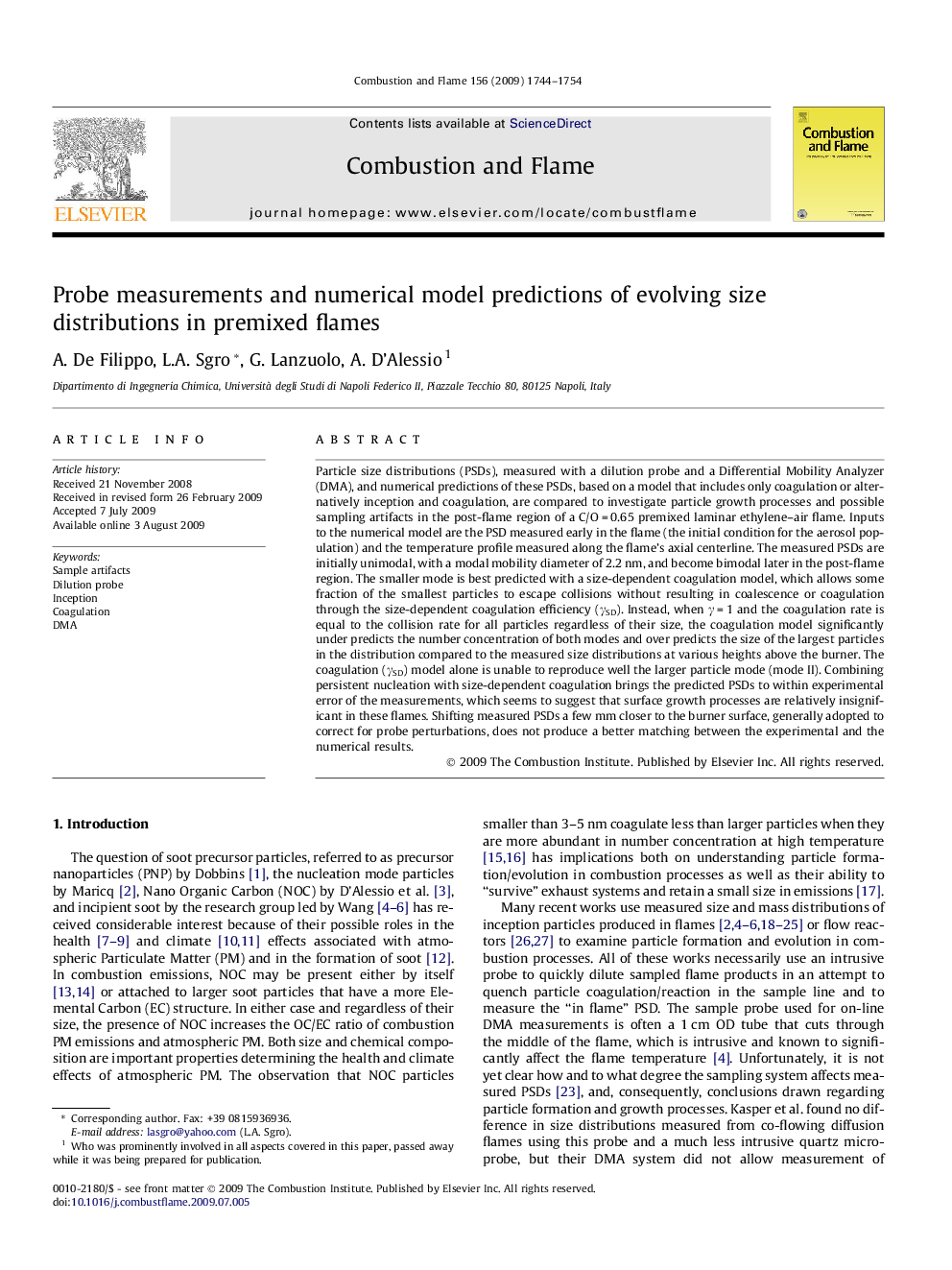| Article ID | Journal | Published Year | Pages | File Type |
|---|---|---|---|---|
| 166836 | Combustion and Flame | 2009 | 11 Pages |
Particle size distributions (PSDs), measured with a dilution probe and a Differential Mobility Analyzer (DMA), and numerical predictions of these PSDs, based on a model that includes only coagulation or alternatively inception and coagulation, are compared to investigate particle growth processes and possible sampling artifacts in the post-flame region of a C/O = 0.65 premixed laminar ethylene–air flame. Inputs to the numerical model are the PSD measured early in the flame (the initial condition for the aerosol population) and the temperature profile measured along the flame’s axial centerline. The measured PSDs are initially unimodal, with a modal mobility diameter of 2.2 nm, and become bimodal later in the post-flame region. The smaller mode is best predicted with a size-dependent coagulation model, which allows some fraction of the smallest particles to escape collisions without resulting in coalescence or coagulation through the size-dependent coagulation efficiency (γSD). Instead, when γ = 1 and the coagulation rate is equal to the collision rate for all particles regardless of their size, the coagulation model significantly under predicts the number concentration of both modes and over predicts the size of the largest particles in the distribution compared to the measured size distributions at various heights above the burner. The coagulation (γSD) model alone is unable to reproduce well the larger particle mode (mode II). Combining persistent nucleation with size-dependent coagulation brings the predicted PSDs to within experimental error of the measurements, which seems to suggest that surface growth processes are relatively insignificant in these flames. Shifting measured PSDs a few mm closer to the burner surface, generally adopted to correct for probe perturbations, does not produce a better matching between the experimental and the numerical results.
